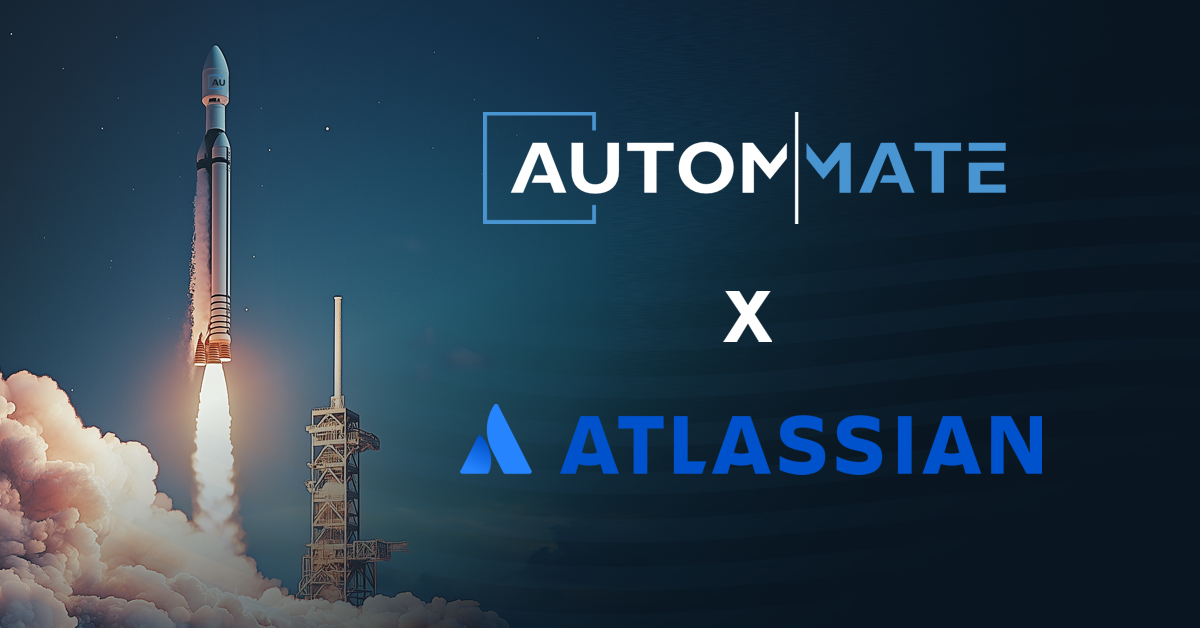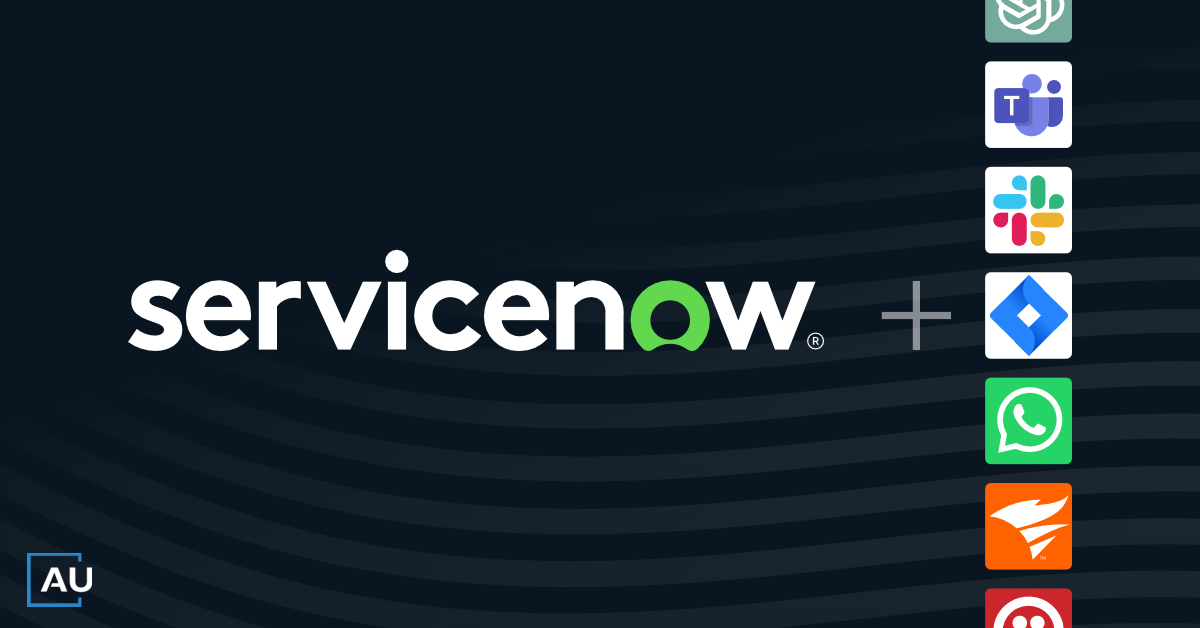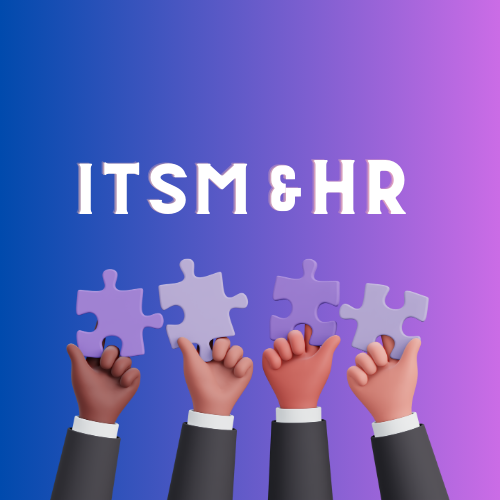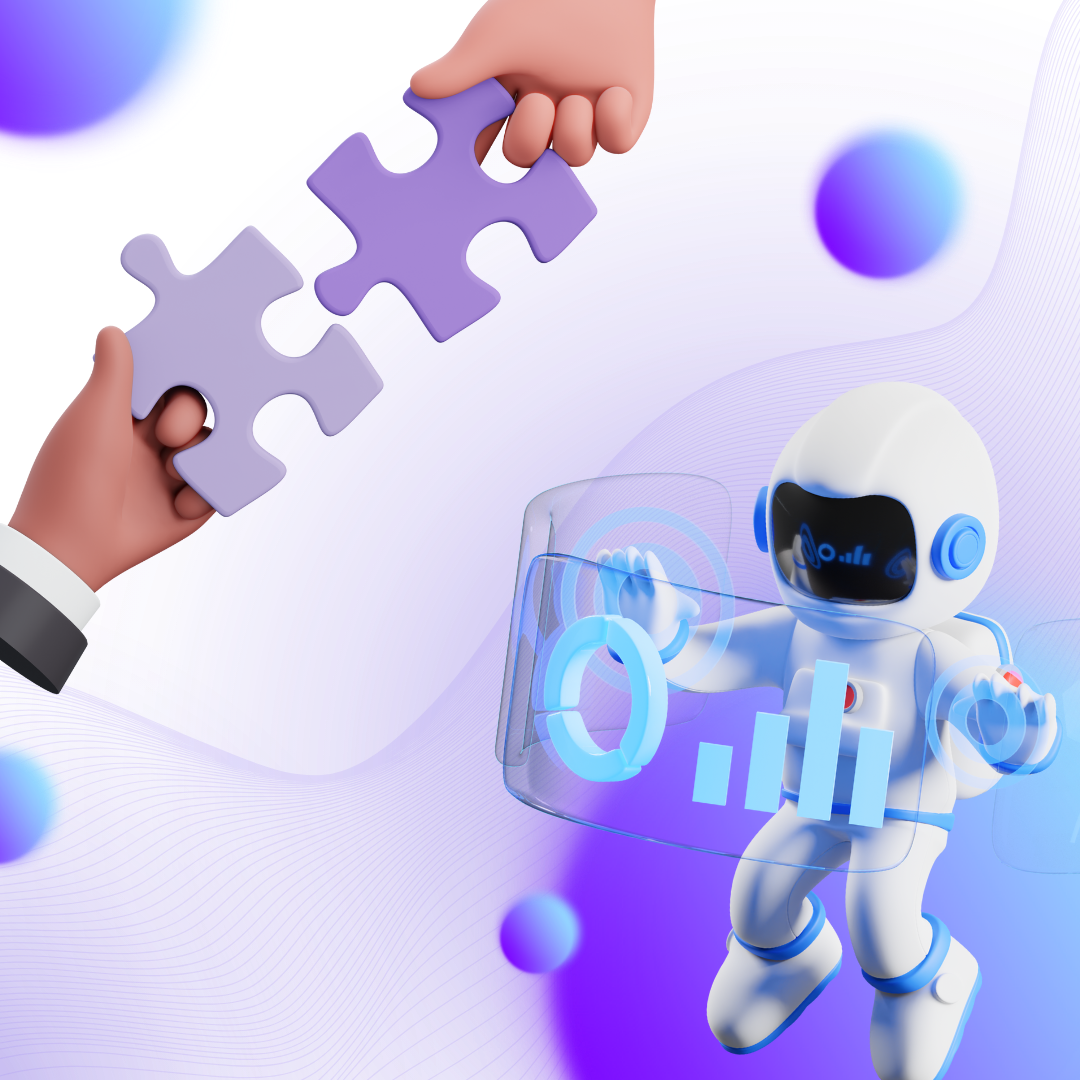We are pleased to announce that Jira users can now access the power of Autom Mate from the Atlassian Marketplace…
Continue reading[START] – [STOP] Hyperflow
How to Simplify the Complexity of Automation and Integration Projects…
Continue readingHow to Simplify 4me/Xurrent Integration & Automation
At Autom Mate, we have extensive experience of Service Management tools and how easy it is (or not) to integrate and automate processes with them. An ecosystem of partners and integration technologies has evolved to cater for the needs of the customer and to help them unlock the true capabilities of ITSM, ESM & SIAM.
4me/Xurrent is a tool that has gained good traction with customers looking for greater collaboration with interconnected office locations, suppliers and the ability to understand and monitor the cost of services across the enterprise.
One key theme though, is that customers still require another tool to integrate back-office systems with their 4me/Xurrent instance. This is commonly taken care of with the help of a partner and the Workato platform.

Example integrations
Common integrations with 4me/Xurrent include SCCM, Active Directory, DevOps tools, HR systems and other Service Management applications like ServiceNow. These tend to work well but are expensive and often add significant cost to the 4me/Xurrent implementation.
Integration and automation are changing
Automation and integration have changed. It is now much easier to not only create these integrations, but it is also very simple for the customer to create and manage their flows themselves. This gives the customer more control and makes them less vendor and partner reliant. Of course, the customer may wish to keep working with their trusted partner when managing their flows, but they should certainly be questioning the cost and ease of doing so.
What should Xurrent customers do?
The automation and integration landscape are accelerating towards better value and performance for the customer and Autom Mate is at the forefront of that change. Autom Mate offers many Xurrent integrations and automations (Automs) that you can setup and start using in minutes. Examples include:
- 4me/Xurrent Jira Ticket Integration
- 4me/Xurrent to ServiceNow Incident Integration
- ServiceNow to 4me/Xurrent Incident Integration
- 4me/Xurrent – Jira Bidirectional Ticket Creation
- MS Teams 4me/Xurrent Ticket Integration
- WhatsApp 4me/Xurrent Ticket Integration
- 4me/Xurrent to FreshService Ticket Integration
- 4me/Xurrent Twilio Integration
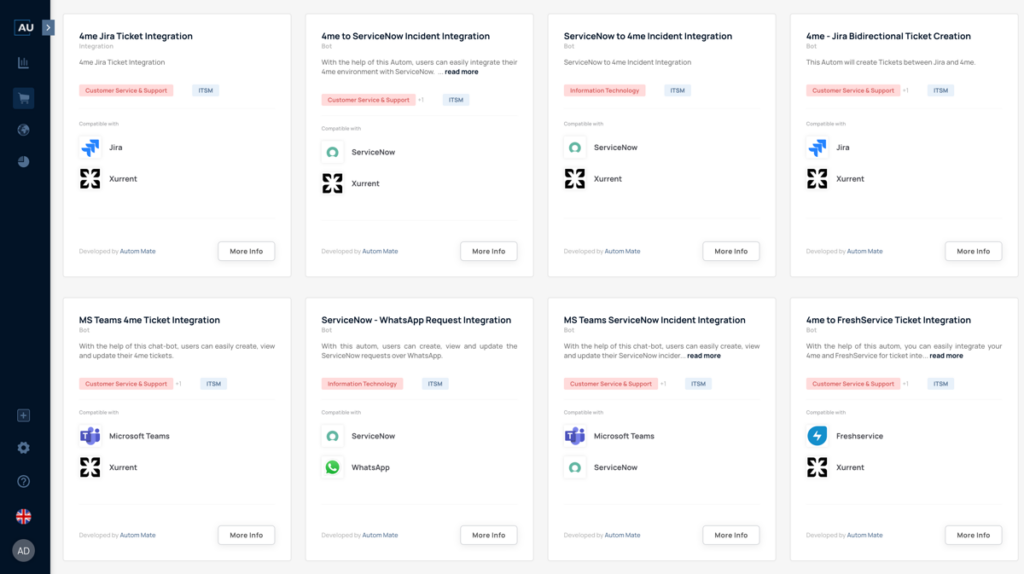
AND… We take pride in the fact that users can easily design and build their own Automs for specialist requirements using our visual building process.
We take Service Management integration very seriously. An interconnected ITSM or ESM platform is a much more effective and business critical tool. Autom Mate is the solution that will help Xurrent customers unlock even more creative and impactful capabilities while also giving them more autonomy and reducing their integration and automation costs.
Taking the next step
Let’s keep things simple. We offer 3 ways for companies to engage with our technology and understand more about how we can help. If you are already a Xurrent customer and have integrations in place, then perhaps a personalised demo is the way to go. You may also want to try the product for yourself. We offer a 30-Day free trial that also includes free help getting started from the Autom Mate team.
Our mission to bring hyperautomation and orchestration to the masses continues. We would love to have you with us on that journey!
Advances in Automation and Integration: Why legacy iPaaS Can’t Keep Up
Automation and integration are transforming the way businesses operate. New technologies are making processes smarter, faster, and more efficient than ever before. As industries evolve, it’s becoming clear that older iPaaS platforms just can’t keep pace with the growing demands of modern workflows.
But rather than focusing on the shortcomings of legacy iPaaS systems, let’s explore 3 exciting ways in which advanced automation and integration tools are reshaping business. From streamlining operations to enhancing customer experiences, these new technologies are unlocking potential in ways we never imagined. Here’s how:
1. Seamless Integration Across Platforms
Older tools often require complex, time-consuming setups and custom coding to connect with other systems. In contrast, modern integration platforms enable seamless, out-of-the-box connectivity across a variety of applications. This reduces friction, minimizes errors, and allows businesses to operate with a unified ecosystem.
What’s new?
Plug-and-play integration with minimal configuration required.
Why it matters:
Saves time, reduces human error, and accelerates adoption of new tools.
2. Real-Time Automation
One of the most significant advantages of new automation tools is their ability to perform tasks in real-time. Whereas older systems often required manual intervention or scheduled runs, today’s solutions can instantly respond to triggers, acting as soon as conditions are met.
What’s new?
Instant, intelligent decision-making based on live data.
Why it matters:
Enables faster responses, real-time analytics, and more agile operations.
3. Improved Scalability and Flexibility
Older tools can become cumbersome as businesses grow, requiring additional hardware, manual updates, and custom solutions. Newer automation technologies, especially cloud-based platforms, offer unmatched scalability. They easily adjust to increased workloads or changes in business needs, ensuring that your operations can expand seamlessly.
What’s new?
Cloud-based solutions that scale effortlessly with business growth.
Why it matters
Reduces the risk of system limitations, allowing businesses to grow and evolve without constraints.
How Autom Mate can help you
Autom Mate provides enterprise capabilities in an easy-to-use platform that can deliver complex hyperflows for less than it costs to book 3 days of consultancy! Sound too good to be true? Why not take a few minutes to check out what we are doing at Autom Mate. Global brands like Shell, Muller, Vodafone and Koc are already delivering agile hyperflows for less and the feedback from our customers is incredible.
Forging the Future Together: A New Year’s Message from our CEO David Griffiths on Partnerships and Possibilities
Happy New Year, friends and partners! As we step into 2025, I can’t help but feel a surge of excitement about the journey ahead. This year holds incredible promise, not just for Autom Mate, but for all of us who share the vision of making automation accessible to businesses of every size.
A Personal Note on Partnerships
I’ve always believed that the best partnerships are like friendships – they’re built on trust, shared goals, and a genuine desire to see each other succeed. As we embark on this new year, I want you to know that I’m personally committed to nurturing these relationships. My virtual (and physical!) door is always open. Whether you have a brilliant idea, a challenging question, or just want to chat about the future of automation, I’m here and eager to connect.
Exciting Opportunities Ahead
2025 is shaping up to be a year of transformation, and I’m thrilled about the possibilities it brings for collaboration and growth. We’re not just expanding our offerings; we’re creating a playground for innovation where all of us – Autom Mate, our partners, and our customers – can thrive together.
New Avenues for Growth
- Value-Added Reselling: This isn’t just about adding another product to your portfolio. It’s about empowering you to offer COMPLETE solutions that can truly transform your clients’ businesses. With our consumption-based model, you have the flexibility to cater to businesses of all sizes, opening up new markets and strengthening your client relationships
- Implementation Services: We’re investing heavily in resources to support you in delivering high-impact implementations. This is your chance to become the go-to expert for automation solutions, driving rapid ROI for clients and building long-term partnerships.
Tools for Success
- Community Edition: Think of this as our sandbox – a free space for your team to play, experiment, and innovate without any financial pressure. It’s the perfect way to get hands-on experience with our platform
- MSP Edition: For our Managed Service Provider partners, this edition is a game-changer. It’s designed to help you unlock new revenue streams and deliver cutting-edge automation services to your clients
Let’s Build Something Amazing Together
What excites me most about 2025 is the potential for collaboration. Together, we’re not just selling software; we’re pioneering a movement towards more efficient, agile, and innovative businesses. Every partnership, every implementation, every success story contributes to this vision. I’m committed to making this journey as rewarding for you as it is for us. That’s why I’m making myself more available than ever. Whether it’s a quick call, a detailed strategy session, or even grabbing a coffee (virtual or real!), I want to hear your thoughts, understand your challenges, and explore how we can grow together.
An Open Invitation
As we dive into 2025, I extend a warm invitation to all our partners – current and future. Let’s connect, brainstorm, and create opportunity and business impact together. Your success is our success, and I’m personally invested in making sure we achieve great things this year. To those who’ve been with us on this journey – thank you for your trust and collaboration. To those considering joining our ecosystem – we’re excited to welcome you and support your growth. Here’s to a year of innovation, partnership, and shared success. Let’s make 2025 our best year yet!
Warmest regards

David Griffiths
CEO, Autom Mate
P.S. My email is [email protected] and my calendar is open for partner meetings every Thursday. Don’t hesitate to reach out – I’m looking forward to our conversations!
Vendor Integration Marketplace vs iPaaS – Which One Is Best?
When it comes to picking the right integration approach, two popular options often come up: Vendor Integration Marketplaces and iPaaS (Integration Platform as a Service). But what’s the difference? Which one is best for your business? Seconds out…Ding!
What Are Vendor Integration Marketplaces?
A Vendor Integration Marketplace is like a digital store that offers pre-built integrations between your systems and third-party applications. Essentially, it’s a one-stop shop where you can pick and choose the integrations you need to make your software work better together.
Key Features of Vendor Integration Marketplaces:
- Pre-Built Connectors: Ready-made integrations with a wide range of software tools.
- Multiple Vendors: Access to various software vendors and their applications in one place.
- One-Time Setup: Once you choose the integration, it usually works right out of the box.
What Are iPaaS Solutions?
iPaaS (Integration Platform as a Service) is a cloud-based solution that helps businesses connect different software applications, systems, and data sources in real-time. The primary purpose of iPaaS is to streamline and simplify the process of integrating various tools, allowing them to communicate and share data seamlessly.
Instead of building complex integrations from scratch, iPaaS provides pre-built connectors, workflows, and APIs that make it easier to link your applications and automate processes. It can integrate cloud-based software, on-premise systems, and even legacy applications, all in one platform.
Key Features of iPaaS Solutions:
- Custom Integration: Build tailored workflows and integrations based on your specific needs.
- Real-Time Data Syncing: Keep all your applications up-to-date with live data flow.
- Cloud-Based & Scalable: Easy to scale as your business grows.
- Centralized Control: Monitor and manage all integrations in one dashboard.
Why Choose iPaaS Over Vendor Integration Marketplaces?
Now, let’s dive into the advantages of using iPaaS over Vendor Integration Marketplaces.
Tailored Solutions for Your Business:
With iPaaS, you can create customized workflows and integrations that are specific to your needs, which means better functionality and more control over your business processes.
Seamless Automation:
iPaaS platforms offer powerful automation features. Imagine all your systems syncing in real-time without having to manually update anything. That’s time saved and fewer errors!
Scalability as You Grow:
As your business expands, you might outgrow the marketplace’s offerings. iPaaS solutions grow with you, offering more features, integrations, and customizability as your business needs evolve.
Centralized Integration Management:
With iPaaS, you have a single dashboard to monitor and manage all your integrations. This means better visibility into your systems, less complexity, and faster troubleshooting.
Reduced IT Dependency:
Since iPaaS is designed to be user-friendly, your non-technical teams can often set up and manage integrations without needing constant IT support. This helps save time and resources.
Greater control of costs
Marketplace integration costs can be one time or transactional depending on who built the integration – either vendor or third-party created. With iPaaS you have much greater visibility of cost over time.
Knockout Punch: Why iPaaS Is the Future of Integration
While Vendor Integration Marketplaces are a great starting point for simpler integration needs, iPaaS solutions take your business to the next level and can often save you money. The customizability, scalability, and control they offer make them ideal for businesses looking to streamline operations and grow without being held back by rigid, one-size-fits-all solutions.
If your business is growing and needs flexible, real-time integrations that can scale, iPaaS is the way to go. It provides all the power you need to keep your systems connected, automate tasks, and stay ahead of the competition. With iPaaS, you’re not just integrating—you’re optimizing for success!
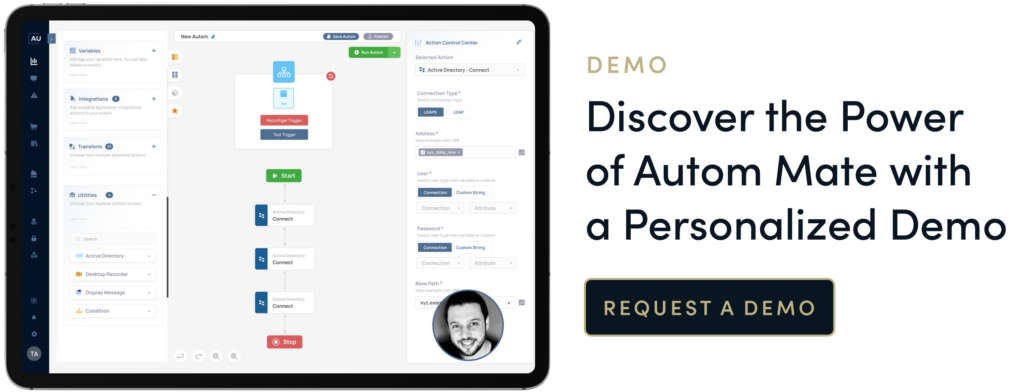
7 Advantages of Using an iPaaS Solution to Integrate Applications with TOPdesk
Integrating different applications with TOPdesk can significantly improve workflow and efficiency. An iPaaS (Integration Platform as a Service) solution simplifies this process. By using an iPaaS, organizations can connect their existing tools with TOPdesk without needing complex coding or technical expertise.
Here are some key advantages of using an iPaaS solution to integrate applications with TOPdesk:
1. Ease of Integration
iPaaS platforms provide pre-built connectors for a wide range of applications.Integration is simplified with drag-and-drop interfaces and no need for custom coding, making the process faster and more accessible for non-technical users.
2. Improved Efficiency
Automate repetitive tasks by linking systems while streamlining processes like ticket management, customer service, and IT support.Save time by synchronizing data between TOPdesk and other tools like CRM systems, email, or chatbots.
3. Faster ROI
iPaaS reduces setup time for integrations.New applications can be connected to TOPdesk quickly, speeding up the overall deployment.This minimizes the learning curve for teams, ensuring smooth transitions when adding new tools.
4. Scalability
Easily scale integrations as the business grows.iPaaS platforms can handle more complex workflows without significant changes to existing systems.New applications can be added as needed, with minimal disruption.
5. Data Consistency
Ensure that data is consistently updated across all platforms.Avoid data silos by syncing information between TOPdesk and other business applications.Reduce the risk of errors caused by manual data entry or outdated information.
6. Cost-Effectiveness
iPaaS platforms often offer pricing that is more affordable than custom-built integrations. This means organizations can reduce their reliance on expensive IT resources or consultants. They can also avoid the cost of ongoing maintenance for bespoke integration solutions.
7. Better Customer Experiences
Streamline customer support by integrating communication tools with TOPdesk.Offer a more seamless experience across different channels, from email to chat to phone, while quickly resolving customer issues by accessing all relevant data in one place.
Example Integrations with TOPdesk Using iPaaS:
Here are some common applications that can be integrated with TOPdesk using an iPaaS solution:
CRM Systems (e.g., Salesforce)
- Automatically create and update support tickets based on customer inquiries.
- Synchronize customer data to ensure agents have up-to-date information.
Communication Tools (e.g., Slack, Microsoft Teams)
- Send notifications to your team about new tickets or status changes.
- Use bots to automate responses and assign tickets directly from the chat platform.
HR Systems (e.g., BambooHR)
- Sync employee data with TOPdesk to quickly resolve IT-related issues for staff members.
- Automatically create tickets when employee onboarding or offboarding tasks are triggered.
Monitoring Tools (e.g., Intune, Lakeside)
- Create incident tickets in TOPdesk when an issue is detected in your monitoring system.
- Automatically update the status of tickets based on system monitoring data.
Conclusion
Using an iPaaS solution to integrate applications with TOPdesk provides several benefits, including simplicity, efficiency, and scalability. By connecting your tools through an iPaaS platform like Autom Mate, you streamline processes, enhance customer experiences, and maintain consistent data across systems. For businesses looking to improve their workflows and reduce manual tasks, an iPaaS integration with TOPdesk is an excellent solution.
Did you know that Autom Mate can do all this and more? If you are a TOPdesk customer looking to integrate and automate, then we would love to show you what our platform can do for you! Register for a demo to learn more.

How to Simplify, Scale & Accelerate ServiceNow Automation
Automation is one of the core strengths of ServiceNow, offering capabilities to streamline IT operations, customer service, and business processes. However, ServiceNow customers often face several challenges when implementing and managing automation via the ServiceNow Integration Hub. Much of these challenges relate to managing integration complexity, complex workflows and a requirement to use consultancy to both setup and maintain integrations.
So, what are the main automation challenges ServiceNow customers face?
- Integration Complexity – ServiceNow customers often want to integrate with multiple third-party systems and applications, such as CRM, ERP, monitoring tools, and other legacy systems. Achieving seamless automation requires robust integrations, which can be complex, time-consuming and therefore costly.
- Customization complexity – ServiceNow offers a high degree of customization, which, while powerful, can lead to overly complex workflows and automation configurations. As organizations scale, managing and maintaining customized automation processes becomes more difficult without constant help.
- Governance and Compliance – Automation processes often involve handling sensitive data or performing critical business functions. Ensuring that these automated processes comply with industry regulations (such as GDPR, HIPAA, etc.) is a significant challenge.
- Complex workflows – Workflow automation in ServiceNow involves mapping out intricate business processes. These workflows can become complicated as they involve multiple conditions, approvals, and interactions with other systems. A poorly designed workflow can slow down operations instead of speeding them up. Adding product and process integration into such workflows spirals the complexity and cost.
- Skills and Expertise – ServiceNow’s automation capabilities require a specific set of skills, such as scripting, workflow design, and API integration. Many organizations face a shortage of skilled personnel who can efficiently design, implement, and maintain automation processes. This means that they must rely on third-party integration consultants and ecosystem partners.
- Transaction-based Integrations – Reliance on multi-party integrations such as those found in vendor marketplaces often lead to transactional or volume-based charging. Such unpredictable cost models mean that budget conscious businesses will be restricted on expanding their useful integration and automation capabilities.
How can ServiceNow customers take control of their own automation and integration strategy?
While ServiceNow offers powerful capabilities, there are common factors in relation to automation and integration that lead to complexity and loss of overall control. It places companies at the behest of partners and consultants that design, implement and critically, maintain the automation and integrations they need. That is not to say that such partner relationships are a bad thing as they are often the backbone of technology success in Service Management.
It is also important to emphasise that it is not to the benefit of the customer to look at automation as one product to many. Quality automation projects regularly include multiple product integrations in a single flow. This is where Service Management platforms really struggle to achieve the goals of the customer without spiralling costs.
As we have noted, the primary challenges faced by customers involve integration complexity, managing customized workflows, ensuring compliance, scaling operations, and the need for skilled resources. Addressing these challenges with the Autom Mate Technology Orchestration Platform, makes it easier for both customers and their partners to orchestrate automation and integration with ServiceNow.
By doing so, the customer reduces complexity and reliance on the vendor ecosystem while also speeding up the whole process and enabling them focus on the opportunities that other technologies offer.
Why not arrange a demo of Autom Mate and see firsthand how it can help you get the best out of your ServiceNow investment. We will show how we can dramatically speed up your automation and integration strategy, connect more useful technologies and save you money!

HR and ITSM Integration & Automation
Problem Statement
In today’s fast-paced business environment, the onboarding processes for employees present significant challenges. HR departments often face the cumbersome task of collecting and disseminating necessary information, while IT teams grapple with setting up and managing numerous accounts and permissions across various applications. These manual processes not only consume valuable time but also increase the risk of errors and security vulnerabilities.

Solution Offered
With Autom Mate’s HyperAutomation platform, organizations can revolutionize their HR and ITSM integration and automation processes. By leveraging our no-code platform, businesses can streamline onboarding and offboarding procedures, significantly reducing manual effort and enhancing efficiency.
Impact on Business:
Simplified Onboarding Process:
- HR teams create onboarding forms within their ITSM software, capturing essential employee information such as contact details, department, and required application access.
- Autom Mate integrates with various applications, automating the account setup process based on the information provided in the onboarding form.
- Approval workflows can be seamlessly integrated, allowing managers to review and approve requests directly through channels like WhatsApp, eliminating delays and reducing human errors.
Result:
Accelerated onboarding process, improved accuracy, and enhanced productivity for HR and IT teams. Autom Mate offers a cutting-edge HyperAutomation platform, empowering organizations to automate complex workflows without the need for extensive coding. With our AI-supported platform, businesses can achieve unprecedented levels of efficiency, accuracy, and productivity.

Autom Mate: Pioneering HyperAutomation Excellence
Autom Mate offers a cutting-edge HyperAutomation platform, empowering organizations to automate complex workflows without the need for extensive coding. With our AI-supported platform, businesses can achieve unprecedented levels of efficiency, accuracy, and productivity.
Join us on the journey towards a future where automation drives success and innovation thrives
What is Systems Integration and How to Integrate Systems Together
Ever felt like your business operates more like a Rubik’s Cube than a well-oiled machine? Data trapped in silos, processes scattered across platforms, and workflows resembling blindfolded sprints – it’s enough to make any CEO sigh. Enter the unsung hero of the digital era: systems integration.
Think of it as the Sherlock Holmes of the tech world, meticulously piecing together the clues hidden within your disparate systems. But unlike the fictional detective, it doesn’t need a deerstalker hat or a magnifying glass. It leverages cutting-edge technology to seamlessly connect your software, tools, and applications, transforming them from isolated islands into a symphony of data and functionality.
But before we unlock the integration vault, let’s define the beast, shall we?
What is Systems Integration?
Systems integration is the art of connecting different systems so they can talk to each other, share information, and work together like a unified whole. Imagine connecting your CRM, accounting software, and marketing platform: suddenly, customer data seamlessly flows between them, personalized campaigns trigger based on purchase history, and reporting becomes a breeze. That’s the magic of integration.
The Many Benefits of Systems Integration
Imagine a world where your disparate business systems are no longer isolated islands but vibrant cities on a seamless, interconnected continent. That’s the transformative power of systems integration, and the benefits it unlocks are as diverse as your business itself. Buckle up, because we’re about to explore the treasure trove of advantages that await…
Boost Efficiency with Automation Superpowers: Forget the tedious copy-pasting and manual data entry – integration unleashes automation magic. Repetitive tasks become lightning-fast, workflows flow like a mountain stream, and your team gains superpowers to focus on strategic initiatives.
Collaboration Harmony: Break down the communication barriers that hold departments hostage! Marketing and sales become best buds, IT and operations sing in harmony, and data becomes the shared language that unites your team. Integration is the conductor, orchestrating a collaboration symphony that elevates your entire business.
Happy Customers, Thriving Business: Anticipate customer needs before they even speak, resolve issues in record time, and deliver personalized experiences that make them smile. Integration unlocks the secrets to customer satisfaction, fueling loyalty and growth.
From Numbers to Actionable Insights: Scattered data is like a hidden treasure map – useless unless unearthed. Integration digs it up, transforming raw numbers into actionable insights that guide strategic decisions and propel your business forward. Make data your compass, not your burden.
Future-Proofing Your Operations: In today’s fast-paced world, flexibility is king. Integration lays the foundation for agility, allowing you to adapt to new technologies and scale with ease seamlessly. No more fear of being left behind – embrace the future, connected and ready to thrive.
These are just a taste of the delicious benefits that await your business when you embrace the power of systems integration. It’s not just about connecting systems, it’s about transforming how you operate, unlocking potential, and propelling your business toward a future of efficiency, collaboration, and unstoppable customer satisfaction. Are you ready to join the connected revolution?
Integration in Action: Connecting Systems, Transforming Workflows
The benefits of systems integration aren’t confined to any one tool – it’s a universal language that lets your various apps and platforms converse and collaborate.
Let’s ignite our imagination with a few captivating examples:
1. Sales & Marketing Harmony: From Leads to Loyal Customers
Imagine your CRM seamlessly feeding targeted leads into your marketing automation platform, triggering personalized email campaigns that nurture prospects into loyal customers. Meanwhile, marketing data enriches your CRM profiles, giving your sales team invaluable insights for closing deals. The integrated approach streamlines the sales funnel, boosts lead conversion, and turns your marketing efforts into revenue-generating machines.
2. HR & Finance Synergy: Streamlined Onboarding and Payroll
Picture new hires entering a world where their onboarding paperwork triggers automatic account creation in your HR system and payment setup in your payroll platform. No more manual data entry, lost paperwork, or delayed paychecks. The seamless integration saves time for HR and finance teams, ensures a smooth new employee experience, and keeps everyone focused on their core tasks.
3. Project Management & Design Collaboration: From Vision to Reality
Imagine designers receiving real-time feedback from project managers within their design software, eliminating the need for endless email chains and conflicting versions. The integration fosters close collaboration, accelerates project timelines, and ensures everyone is on the same page, turning visions into stunning realities.
5. Customer Service & Analytics Insight: From Frustration to Resolution, Powered by Data
Imagine customer support agents equipped with a unified view of a customer’s interactions across all channels – emails, phone calls, and chat logs. The 360-degree picture, powered by integrated analytics, lets them resolve issues faster, anticipate needs, and personalize interactions.
These are just a few sparks of the integration revolution. Remember, the possibilities are endless. Explore, connect, and watch your workflows transform, your efficiency soar, and your business reach its full potential.
The Future is Integrated: Embrace the Power of Connection
In today’s digital landscape, isolation is a recipe for stagnation. Systems integration is the bridge that connects the dots, unlocks hidden potential, and propels your business toward a future of efficiency, agility, and customer-centricity. So, grab your metaphorical wrench, loosen the silos, and start building the interconnected ecosystem that will take your business to the next level. That’s where Autom Mate comes in, not as a missing piece, but as the conductor of your integrated symphony. Autom Mate is more than just another integration platform; it’s a revolutionary blend of automation and integration power, weaving together your disparate systems into a seamless tapestry of operational excellence.
Imagine a world where:
- RPA bots tirelessly handle repetitive tasks, freeing your team to focus on strategic initiatives.
- iPaaS seamlessly connects your diverse systems, creating a unified flow of data and communication.
- Advanced analytics transform raw data into actionable insights, guiding your decisions with clarity and confidence.
- Autom Mate acts as the maestro, weaving these technologies together into an intuitive, drag-and-drop platform that empowers everyone to automate and integrate with ease.
Autom Mate is not just an integration platform; it’s an automation revolution. It lets you:
- Build and deploy RPA bots without extensive coding, empowering citizen developers to automate workflows.
- Connect any combination of apps and databases with pre-built connectors and flexible APIs, breaking down silo walls and fostering collaboration.
- Design and execute complex workflows with a visual interface, orchestrating seamless automation across your entire ecosystem.
- Gain a 360-degree view of your operations with a unified dashboard, empowering data-driven decision making and continuous improvement.
Don’t just integrate; hyperautomate your way to the future. With Autom Mate as your partner, you can unlock the full potential of your connected systems, boost efficiency, enhance collaboration, and delight your customers. Embrace the symphony of hyperautomation. Take the first note with Autom Mate today.

